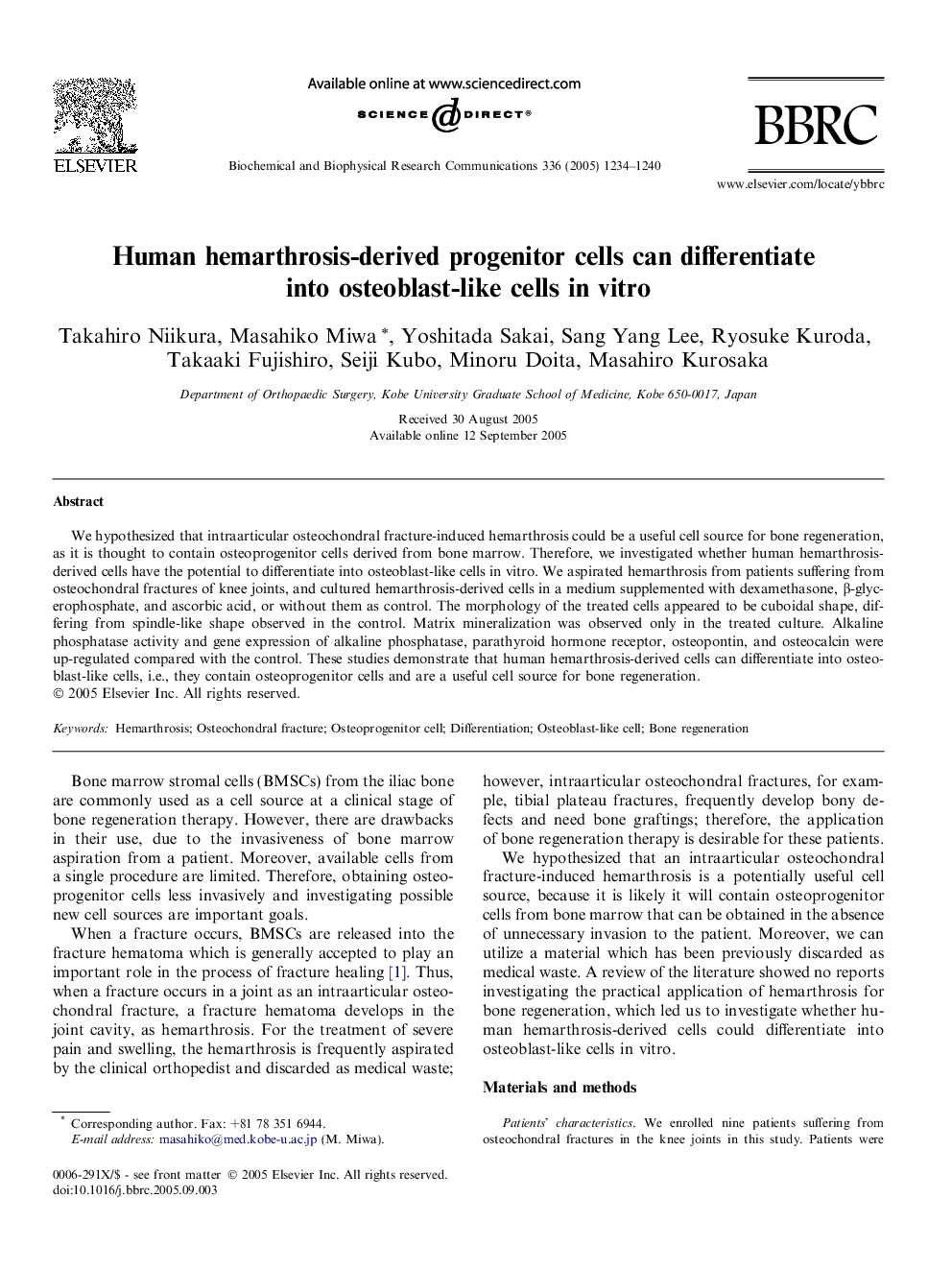| Article ID | Journal | Published Year | Pages | File Type |
|---|---|---|---|---|
| 10767785 | Biochemical and Biophysical Research Communications | 2005 | 7 Pages |
Abstract
We hypothesized that intraarticular osteochondral fracture-induced hemarthrosis could be a useful cell source for bone regeneration, as it is thought to contain osteoprogenitor cells derived from bone marrow. Therefore, we investigated whether human hemarthrosis-derived cells have the potential to differentiate into osteoblast-like cells in vitro. We aspirated hemarthrosis from patients suffering from osteochondral fractures of knee joints, and cultured hemarthrosis-derived cells in a medium supplemented with dexamethasone, β-glycerophosphate, and ascorbic acid, or without them as control. The morphology of the treated cells appeared to be cuboidal shape, differing from spindle-like shape observed in the control. Matrix mineralization was observed only in the treated culture. Alkaline phosphatase activity and gene expression of alkaline phosphatase, parathyroid hormone receptor, osteopontin, and osteocalcin were up-regulated compared with the control. These studies demonstrate that human hemarthrosis-derived cells can differentiate into osteoblast-like cells, i.e., they contain osteoprogenitor cells and are a useful cell source for bone regeneration.
Keywords
Related Topics
Life Sciences
Biochemistry, Genetics and Molecular Biology
Biochemistry
Authors
Takahiro Niikura, Masahiko Miwa, Yoshitada Sakai, Sang Yang Lee, Ryosuke Kuroda, Takaaki Fujishiro, Seiji Kubo, Minoru Doita, Masahiro Kurosaka,
